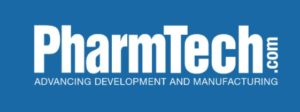Published Articles
 Q. I’m responsible for quality at a small, virtual startup company, and we contract out all of our activities. I’m working on documentation to contract out our product testing and was wondering what information there is regarding quality agreement and laboratory investigations.
Q. I’m responsible for quality at a small, virtual startup company, and we contract out all of our activities. I’m working on documentation to contract out our product testing and was wondering what information there is regarding quality agreement and laboratory investigations.
A. The best place to start is to take a critical look at existing guidance documents and regulations that govern quality agreement and out-of-specification (OOS) investigations.
OOS Investigation
“The Food and Drug Administration is aware that many manufacturers of pharmaceutical products utilize extramural independent contract facilities, such as testing laboratories, contract packers or labelers, and custom grinders, and regards extramural facilities as an extension of the manufacturer’s own facility”.
FDA Guidance
The next document to review for quality agreements is the FDA guideline titled Contract Manufacturing Arrangements for Drugs: Quality Agreements. Section B, Elements of a Quality Agreement, Part e. Laboratory controls states that a quality agreement should include:
“Designation of responsibility for investigating deviations, discrepancies, failures, out-of-specification results, and out-of-trend results in the laboratory, and for sharing reports of such investigations”.
EudraLex
This confirms that the responsibility for OOS investigations is shared and communication between the contract giver and contract provider is critical. The European Union also addresses the need for a relationship between you and your outsourced laboratory in EudraLex, Chapter 7 (7.15) on Outsourced Activities by stating:
“The Contract should describe clearly who undertakes each step of the outsourced activity, e.g. knowledge management, technology transfer, supply chain, subcontracting, quality and purchasing of materials, testing and releasing materials, undertaking production and quality controls (including in-process controls, sampling and analysis)”.
Good Manufacturing Practices
The above regulations establish the need for quality agreements that cover laboratory activities but doesn’t define what needs to be in an OOS procedure. The EU addresses the need to investigate OOSs in their good manufacturing practices. EudraLex Part 1, Section 6.35 states,
“Out-of-specification or significant atypical trends should be investigated. Any confirmed out of specification result, or significant negative trend, affecting product batches released on the market should be reported to the relevant competent authorities. The possible impact on batches on the market should be considered in accordance with Chapter 8 of the GMP Guide and in consultation with the relevant competent authorities”.
GMP Compliance
Part 2 of the EU GMP guide for APIs states in section 11.15 that:
“Any out-of-specification result obtained should be investigated and documented according to a procedure. This procedure should require analysis of the data, assessment of whether a significant problem exists, allocation of the tasks for corrective actions, and conclusions. Any re-sampling and/or retesting after OOS results should be performed according to a documented procedure”.
Out-of-Specification (OOS)
The best GMP compliance guidance, however, on conducting OOS investigations is the information provided in FDA’s Guidance for Industry, Investigating Out-of-Specification (OOS) Test Results for Pharmaceutical Production (6).
The responsibilities for the laboratory analyst and supervisor are clearly defined in this guidance and should be reflected in any laboratory OOS procedure. A well-written standard operating procedure (SOP) on OOSs should require investigations to be thorough, timely, unbiased, well documented, and scientifically sound.
GMP Regulations
Often, the procedure will contain a GMP regulations checklist that assists in identifying obvious laboratory errors. The checklist assesses the suitability of analyst qualification and training, use of correct procedure and specification, the calibration and performance of the equipment, correct preparation of test solutions and dilutions, use of proper reagents and standards, calculations, etc.
A thorough checklist and analyst documentation are critical in identifying true laboratory errors. The SOP should also discuss the sample retesting requirements when a true laboratory error is determined to be the cause of the OOS.
GMP Guidelines
The most important and critical element for OOS investigations is specifying the timeliness. These guidelines should be stipulated in the SOP and, in most cases, the investigation into the OOS, from the laboratory perspective, should be concluded in 24 hours or less.
The expectation of when the contract lab will inform you of any OOS obtained should be clearly defined in your quality agreement. The sooner a laboratory error can be ruled out as the cause of the OOS result, the sooner the full-blown manufacturing investigation can be started.
Quality Agreement
Taking the time to establish a quality agreement and investigate the details of their OOS procedure is the first step in establishing a good working relationship with your contract test laboratory. This working relationship will become invaluable when an OOS occurs.
The final product testing procedure for OOSs isn’t the only one you need to review, however. You should also look at the quality agreement and OOS procedure being used by your manufacturer for in-process test results, assuming they are different entities. The same information required in the final product OOS procedure should be the same for in-process testing.
Article Details
Pharmaceutical Technology
Vol. 43, No. 6
Pages 50, 49
To begin the Regulatory Compliance Associates scoping process today, please enter your information in the blue form below and click the submit button at the bottom of the webpage. You may also email us at [email protected].
Connect with RCA Today
Contact us to learn more about our regulatory compliance experts and how they can help




















